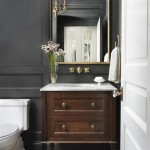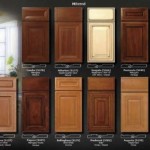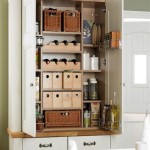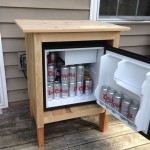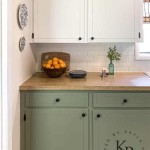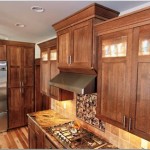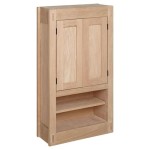How To Build Sliding Drawers For Kitchen Cabinets
Upgrading kitchen cabinets with sliding drawers can significantly improve functionality and accessibility. Instead of reaching deep into cabinets for items, a simple pull brings everything within easy reach. While installing pre-made drawer systems is an option, building custom drawers allows for precise fitting within existing cabinet dimensions and offers a cost-effective alternative.
This article provides a comprehensive guide to building sliding drawers for kitchen cabinets, covering material selection, accurate measurement, construction techniques, and proper installation of drawer slides. The information presented aims to equip the reader with the knowledge necessary to complete this project successfully.
Key Point 1: Planning and Material Selection
Before commencing construction, a thorough planning phase is essential. This involves assessing the existing cabinet structure, determining drawer dimensions, and selecting appropriate materials. Neglecting this initial step can lead to errors later in the process, resulting in wasted time and resources.
The first step is to carefully measure the interior dimensions of the cabinet opening where the drawer will be installed. Measure the height, width, and depth of the opening. It is crucial to account for any obstructions, such as pipes or wires. Subtract the necessary clearance for the drawer slides from the width measurement. The manufacturer's specifications for the chosen drawer slides typically indicate the required clearance. This clearance is usually between 1/2 inch and 1 inch per side.
Determine the desired drawer height. Consider the items to be stored within the drawer. Shallower drawers are suitable for utensils or small items, while deeper drawers can accommodate pots, pans, or food storage containers. Remember to consider the vertical space required for the drawer slides.
Next, select the material for the drawer boxes. Plywood, solid wood, and melamine are common choices. Plywood offers stability and resistance to warping, making it a popular option. Solid wood provides a traditional aesthetic and durability, but it can be more susceptible to expansion and contraction with changes in humidity. Melamine is a cost-effective option with a smooth, easy-to-clean surface, but it may not be as durable as plywood or solid wood.
Consider the thickness of the material. Typically, 1/2-inch or 3/4-inch plywood or solid wood is used for drawer boxes. Thicker material provides greater strength and stability, especially for larger drawers. Melamine is often available in similar thicknesses.
Select the appropriate drawer slides. Ball-bearing slides are a popular choice due to their smooth operation and load-bearing capacity. These slides are available in various lengths to accommodate different drawer depths. Undermount slides offer a concealed appearance and are typically softer closing, but they can be more expensive.
Finally, gather all the necessary tools. A table saw or circular saw, measuring tape, square, drill, screwdriver, wood glue, clamps, and safety glasses are essential for this project. A router can be helpful for creating decorative edges or dadoes for drawer bottoms.
Key Point 2: Construction Techniques
Once the planning is complete and materials are gathered, the construction phase can begin. Accurate cuts and secure assembly are crucial for building durable and functional drawers.
Begin by cutting the drawer box components to the required dimensions. These include the front, back, and side pieces. Use a table saw or circular saw to make precise cuts. Ensure that all cuts are square to prevent alignment issues during assembly. It is advisable to cut the pieces slightly oversized and then trim them to the exact dimensions using a jointer or planer if available.
Assemble the drawer box using wood glue and fasteners. There are several methods for joining the drawer box components. A common method is to use butt joints reinforced with screws or nails. For a stronger joint, consider using rabbet joints or dado joints. Rabbet joints involve cutting a groove along the edge of one piece to receive the edge of another piece. Dado joints involve cutting a groove in one piece to receive the entire face of another piece.
Apply wood glue to the joining surfaces and clamp the pieces together. Use screws or nails to secure the joints. Ensure that the screws or nails are countersunk to prevent them from interfering with the drawer slides. Allow the glue to dry completely before proceeding to the next step.
Install the drawer bottom. The drawer bottom can be made from plywood, hardboard, or melamine. The drawer bottom can be attached using several methods. One method is to recess the drawer bottom into a groove (dado) cut into the drawer box sides. This provides a strong and secure connection. Another method is to attach the drawer bottom to the bottom edges of the drawer box using screws or nails. If using screws or nails, ensure that they are short enough to prevent them from protruding through the drawer box sides.
Sand all the surfaces of the drawer box to remove any rough edges or splinters. This will ensure a smooth and comfortable feel. Consider applying a finish to the drawer box to protect the wood and enhance its appearance. A clear finish, such as polyurethane or varnish, is a popular choice. Alternatively, the drawer box can be painted to match the kitchen cabinets.
Key Point 3: Installing Drawer Slides
Proper installation of drawer slides is essential for smooth and reliable drawer operation. Careful alignment and secure attachment are critical for optimal performance.
Begin by marking the location of the drawer slides on the cabinet interior. The manufacturer's instructions for the drawer slides will specify the required placement. Use a measuring tape and square to ensure accurate and consistent positioning. It is important to mark both the vertical and horizontal position of the slides.
Attach the cabinet members of the drawer slides to the cabinet interior. Use screws to securely attach the slides to the cabinet. Ensure that the screws are the correct length to prevent them from protruding through the cabinet sides. Pilot holes can be helpful for preventing the wood from splitting. Check that the slides are aligned properly and are parallel to each other.
Attach the drawer members of the drawer slides to the drawer box sides. Again, use screws to securely attach the slides to the drawer box. Ensure that the screws are the correct length and that they are driven straight. Pilot holes can be helpful for preventing the wood from splitting.
Insert the drawer into the cabinet. Align the drawer members of the slides with the cabinet members of the slides. Gently push the drawer into the cabinet until the slides engage. Check that the drawer slides smoothly and easily. If the drawer does not slide smoothly, check the alignment of the slides and make any necessary adjustments.
Test the drawer operation. Open and close the drawer several times to ensure that it operates smoothly and without any binding. Check that the drawer closes completely and that it remains closed when not in use. If necessary, adjust the position of the drawer slides to achieve optimal performance. Some drawer slides have adjustable features that allow for fine-tuning of the drawer alignment.
Install a drawer front (optional). A drawer front can be attached to the drawer box to conceal the drawer construction and provide a more finished appearance. The drawer front can be attached using screws, or it can be attached using a combination of glue and screws. Ensure that the drawer front is aligned properly with the drawer box and that it is securely attached.
Consider adding drawer pulls or knobs. Drawer pulls or knobs can make it easier to open and close the drawers. Install the drawer pulls or knobs according to the manufacturer's instructions. Choose drawer pulls or knobs that complement the style of the kitchen cabinets.
By following these steps carefully, one can successfully build and install sliding drawers for kitchen cabinets, significantly improving kitchen organization and accessibility. Remember to prioritize accuracy, precision, and safety throughout the entire process.

How To Make Simple Easy Sliding Shelves

How To Build Kitchen Cabinets Install Drawer Slides

How To Make Simple Easy Sliding Shelves

How To Make Pull Out Shelves For Kitchen Cabinets Ron Hazelton

Diy Pull Out Cabinet Drawers Love Renovations

Diy Pull Out Cabinet Drawers Love Renovations

Build Pull Out Shelves For Kitchen Cabinets

Kitchen Storage Pull Out Pantry Shelves Diy Family Handyman

Diy Pull Out Cabinet Drawers Love Renovations

Kitchen Organization Pull Out Shelves In Pantry Remodelando La Casa
Related Posts

